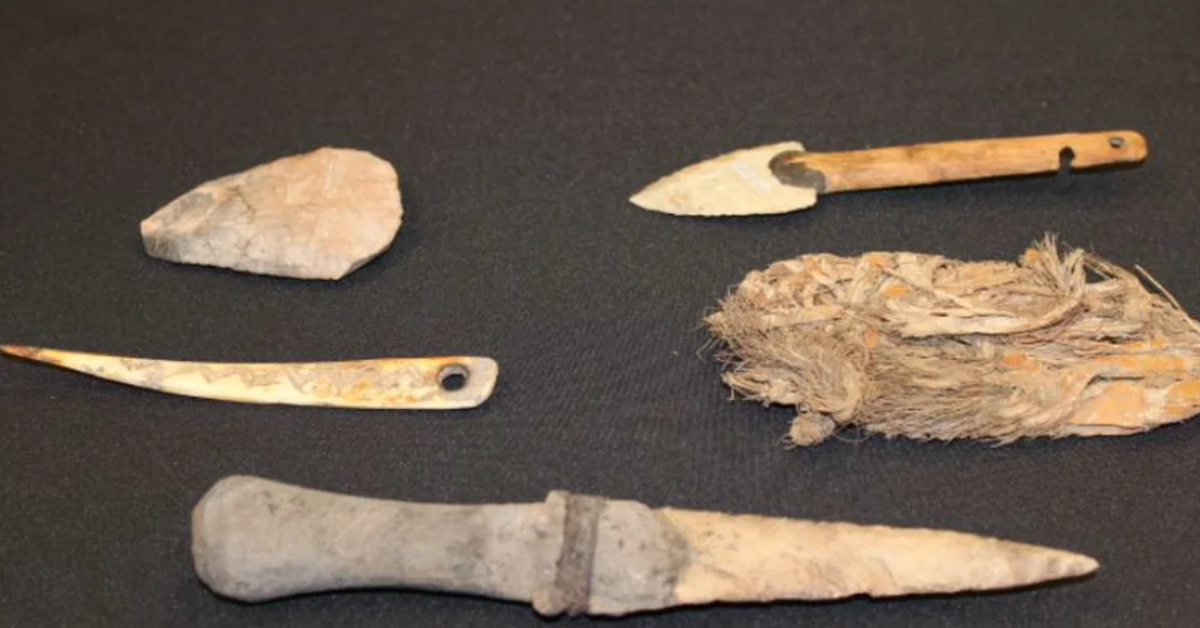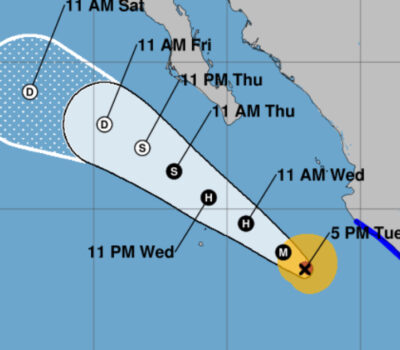Mexico received 428 archaeological objects from the United States dating from the Late Postclassic period (900-1600 AD), associated with desert cultures settled in northern Mexico and the southern United States, reported authorities from the Federal Ministry of Culture.
“The Federal Ministry of Culture, through the National Institute of Anthropology and History (INAH), received 428 archaeological goods from the United States from the Ministry of Foreign Affairs (SRE),” the agency said in a joint statement.
According to the Mexican authorities, the batch of objects was delivered by the Mexican Consulate in Portland, Oregon, and received in Mexico by the deputy director of the Register of Movable Archaeological Monuments of the INAH, Jaime Alejandro Bautista.
Salvador Tinajero, Deputy Legal Consultant at SRE, pointed out that the elements ( projectile points and scrapers made of flint, shell, and bone artifacts, in addition to two knives that preserve their original handles) “are representative of semi-nomadic communities of hunters- collectors”.
Among the objects delivered to the diplomatic headquarters, two elements of organic material stand out: a huarache and a fragment of a petate, in a fair state of conservation.
Likewise, various marine fossils of the genus Exogyra were returned to Mexico, which has been dated to the Cretaceous period, with an estimated age of 60 million years.
Archaeologist Alejandro Bautista indicated that each of the 428 pieces will be protected by the INAH and registered in the Public Registry of Archaeological and Historical Monuments and Zones of the institution, with the possibility that they may become part of exhibitions in museums.
He emphasized maintaining collaborative ties with the governments of other countries in order to promote the culture of restitution of heritage assets to their nations of origin.
Likewise, he called on the population, in general, to avoid being participants in the looting of heritage sites and the illicit trafficking of historical and archaeological goods, since a consequence of such crimes is the loss of information in the context of the pieces.
The recovery is part of the foreign policy of President Andrés Manuel López Obrador (AMLO), who has as a “priority” to recover the historical and cultural heritage, as Mexican Foreign Minister Marcelo Ebrard said a few days ago.
On July 26, the Mexican government, through the Ministry of Culture, Foreign Affairs, and the National Institute of Anthropology and History (INAH) reported that so far the López Obrador government has recovered more than 8,970 archaeological pieces that were abroad and that were gradually returned to the country.
“It is about the restoration of dignity, Wole Soyinka said. “The dignity of those who have always been dispossessed and discriminated against, of the cultures that have resisted 500 years, that are alive and deserve to be recognized in the greatness of their past. It is doing justice to the cultures that preceded us,” said Alejandra Frausto, Secretary of Culture.
Foreign Minister Marcelo Ebrard commented that the recovery of historical and cultural heritage is now a priority in foreign policy. Which has been advancing through the Mexican embassies in the rest of the world.
“We have recovered 8,970 pieces, which means that if we compare it with the previous administration, we have more than 55% of what had been recovered before,” he said.
For the proper development of this strategy, the foreign minister broke down the work plan they handled, which consists of 3 actions. The first: the voluntary delivery, that is to say, to raise awareness, to insist, who have the rights of different types of collections. Second, the seizures by law, and third, the cancellation of auctions of artifacts.
Mexico received 428 archaeological objects from the United States dating from the Late Postclassic period (900-1600 AD), associated with desert cultures settled in . . .












